Blues, Coppers and Hairstreaks
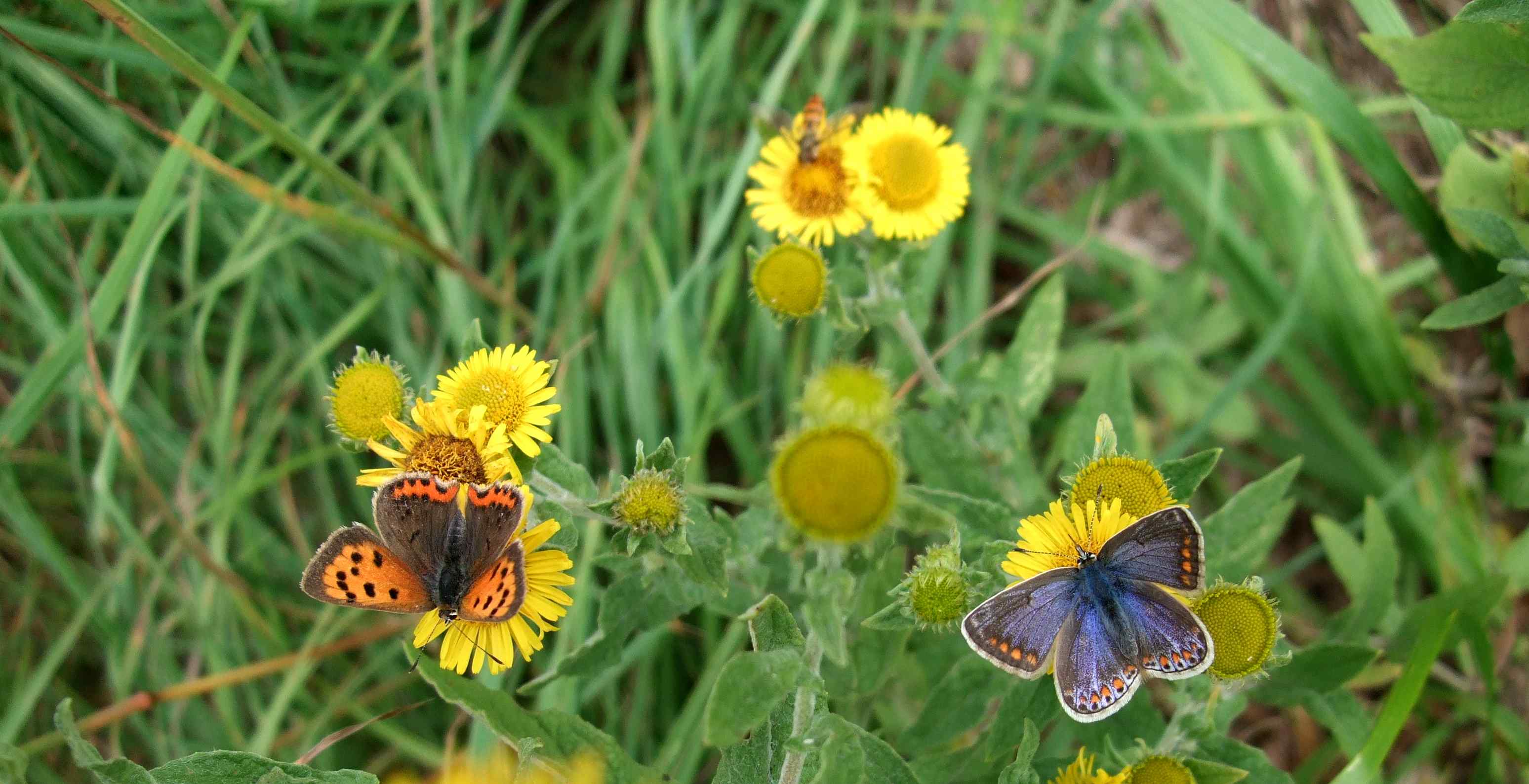 Blues and Coppers
Blues and Coppers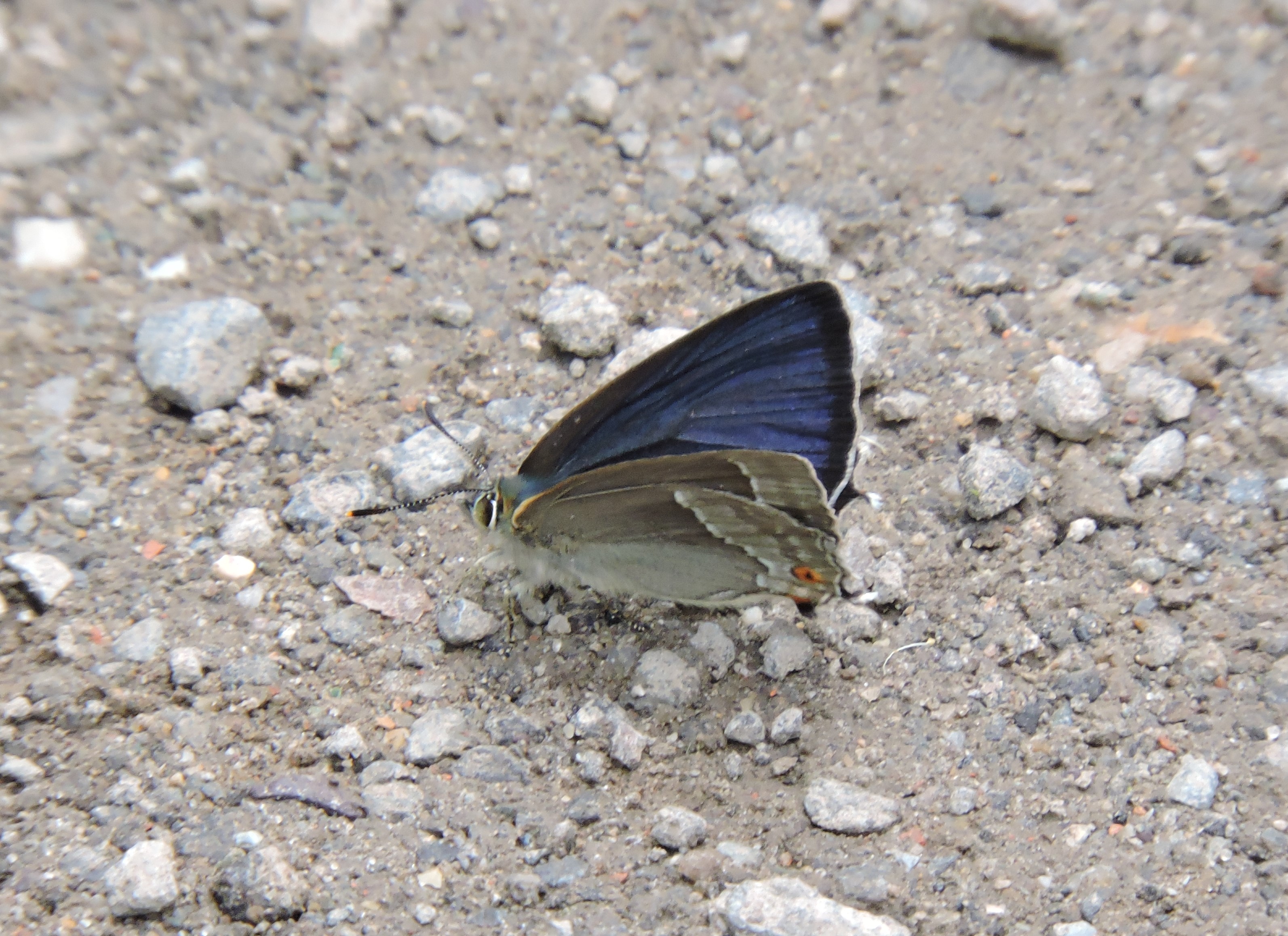 Hairstreaks
Hairstreaks
Family: LYCAENIIDAE
A family of small but beautifully ornate delightful butterflies consisting mainly of the Blues, the Small Copper and the Hairstreaks. Only three Blues are found in Lincolnshire (including the non-blue coloured Brown Argus!). All five Hairstreaks occur in selected areas of the county and the as yet unbelievable one-off sighting of a Green in 2014 remains the biggest surprise to date in our garden. It was seen on one of its many larval foodplants – dogwood – but where did it come from? This is NOT a mobile species.
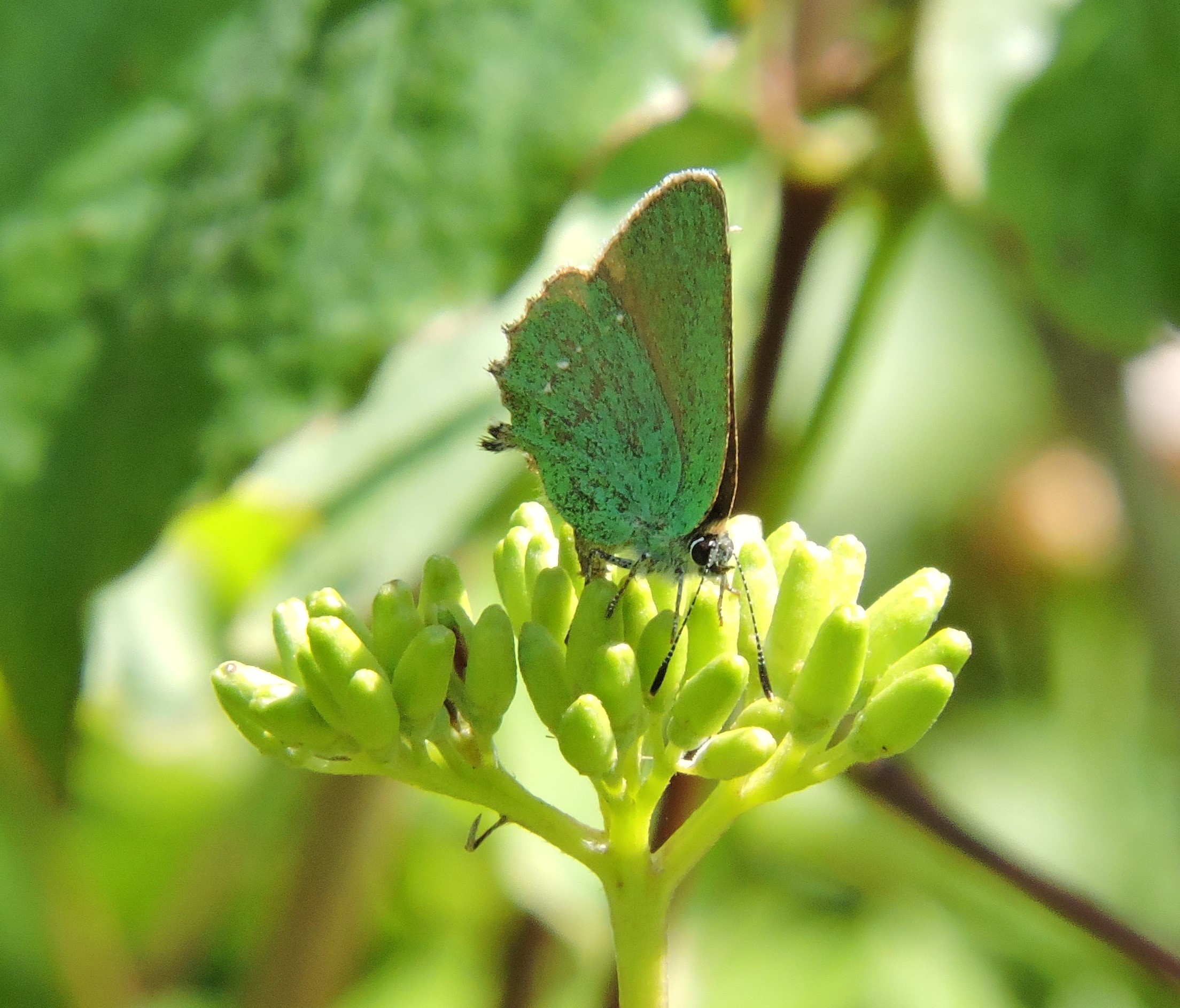 Green Hairstreak on Dogwood
Green Hairstreak on Dogwood
Purple Hairstreak (Quercusia quercus)
CURRENT STATUS: In July 2021 the Purple Hairstreak took us by surprise by revealing what is hopefully the start of a small colony around the oaks in the woodland and pond gardens. Looking back through my records, it is possible that we have seen occasional unconfirmed sightings of this sedentary species from as far back as 2009! They are easily overlooked in view of their largely tree-top dwelling behaviour.
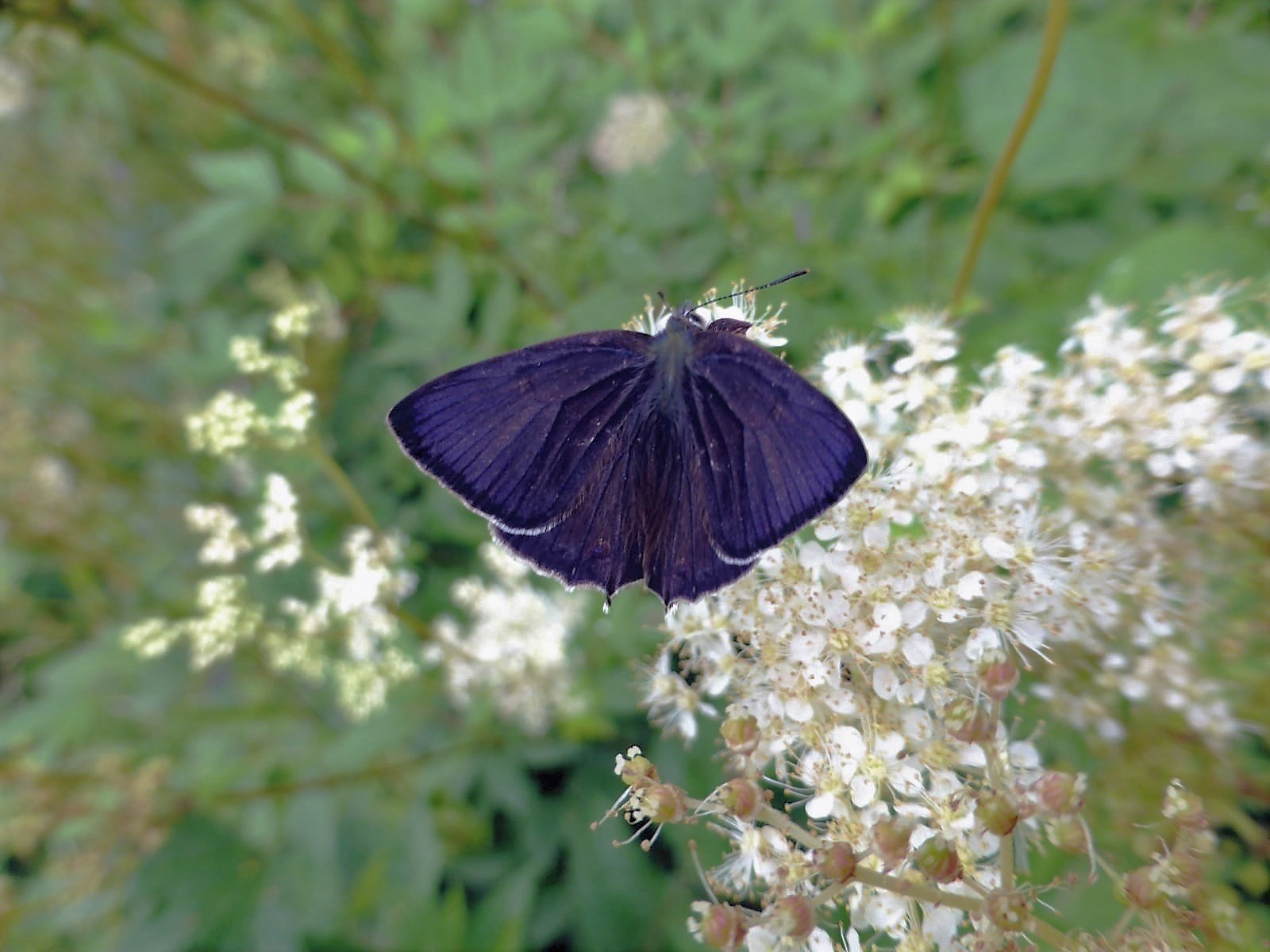 Purple Hairstreak male
Purple Hairstreak male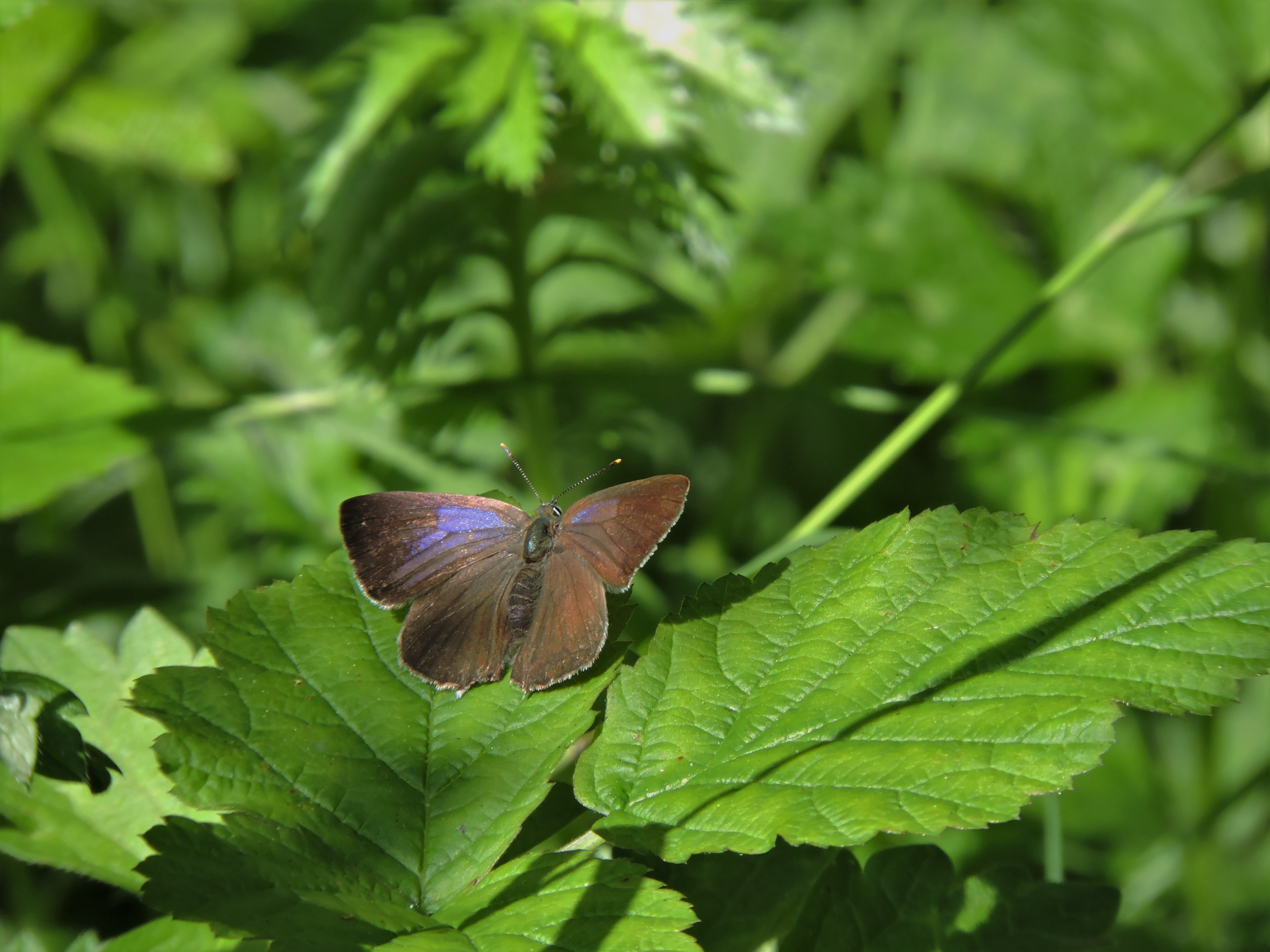 Purple Hairstreak female
Purple Hairstreak female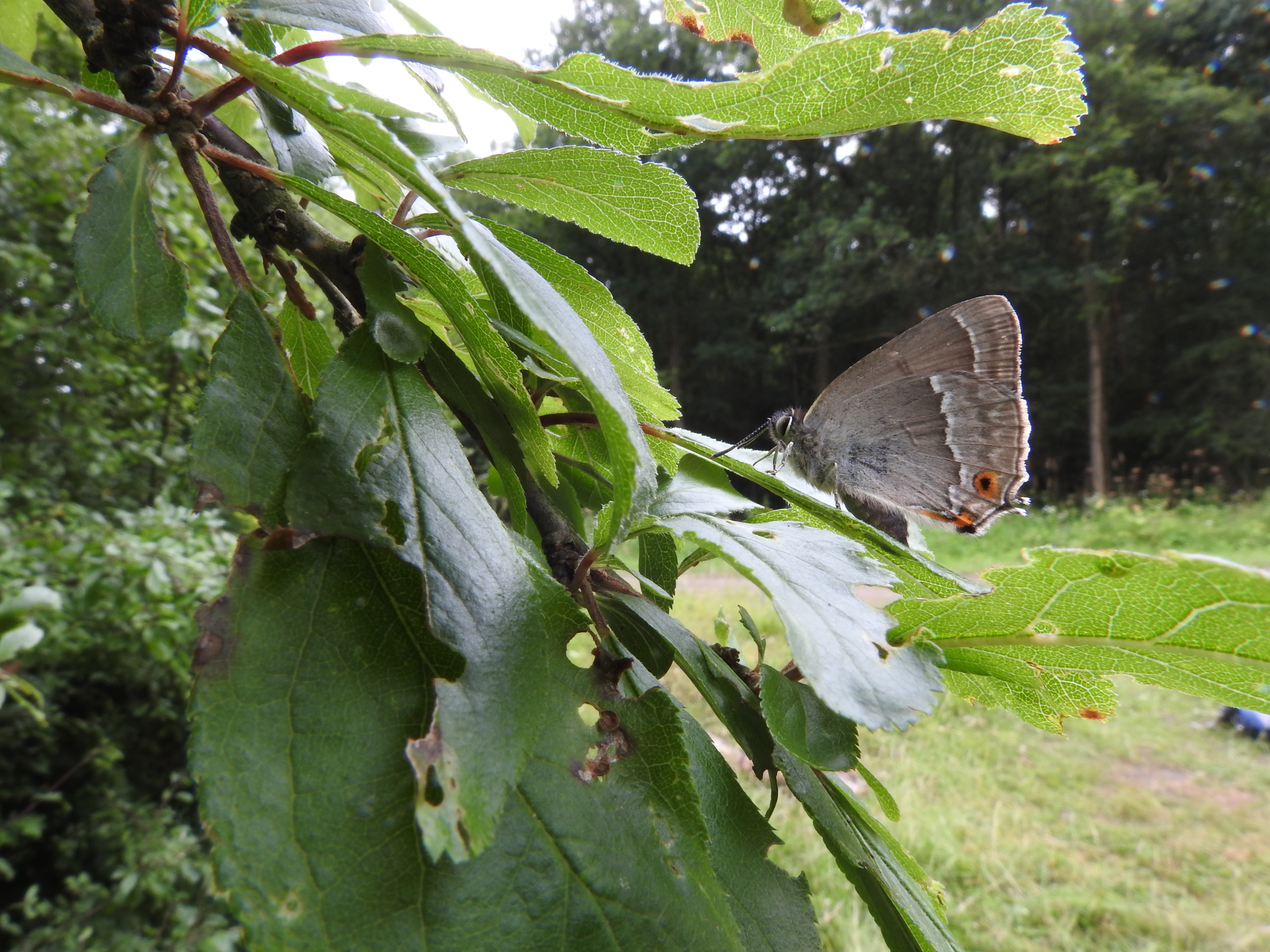 Purple Hairstreak underside
Purple Hairstreak underside
LARVAL FOODPLANT: oak.
FAVOURED NECTAR PLANTS: very rarely visit flowers, instead imbibing the honey dew secreted by aphids on the leaves of trees, particularly ash.
WHEN SEEN: July – August.
SPECIAL REQUIREMENTS: tall mature oak and ash.
White-letter Hairstreak (Strymonidia w-album)
CURRENT STATUS: For many years we have expected this butterfly to arrive because of the prolific elm in our immediate vicinity (the larval foodplant). We now have very mature, healthy flowering elm trees, mainly in the woodland garden, and it is widely believed that the caterpillars need the flowers to feed on when they hatch from the egg in early spring, as the flowers come before the leaves. Over the years there have been the occasional unconfirmed sightings, especially in 2021 when the Purple Hairstreak arrived, and indeed the White-letter followed in 2022.
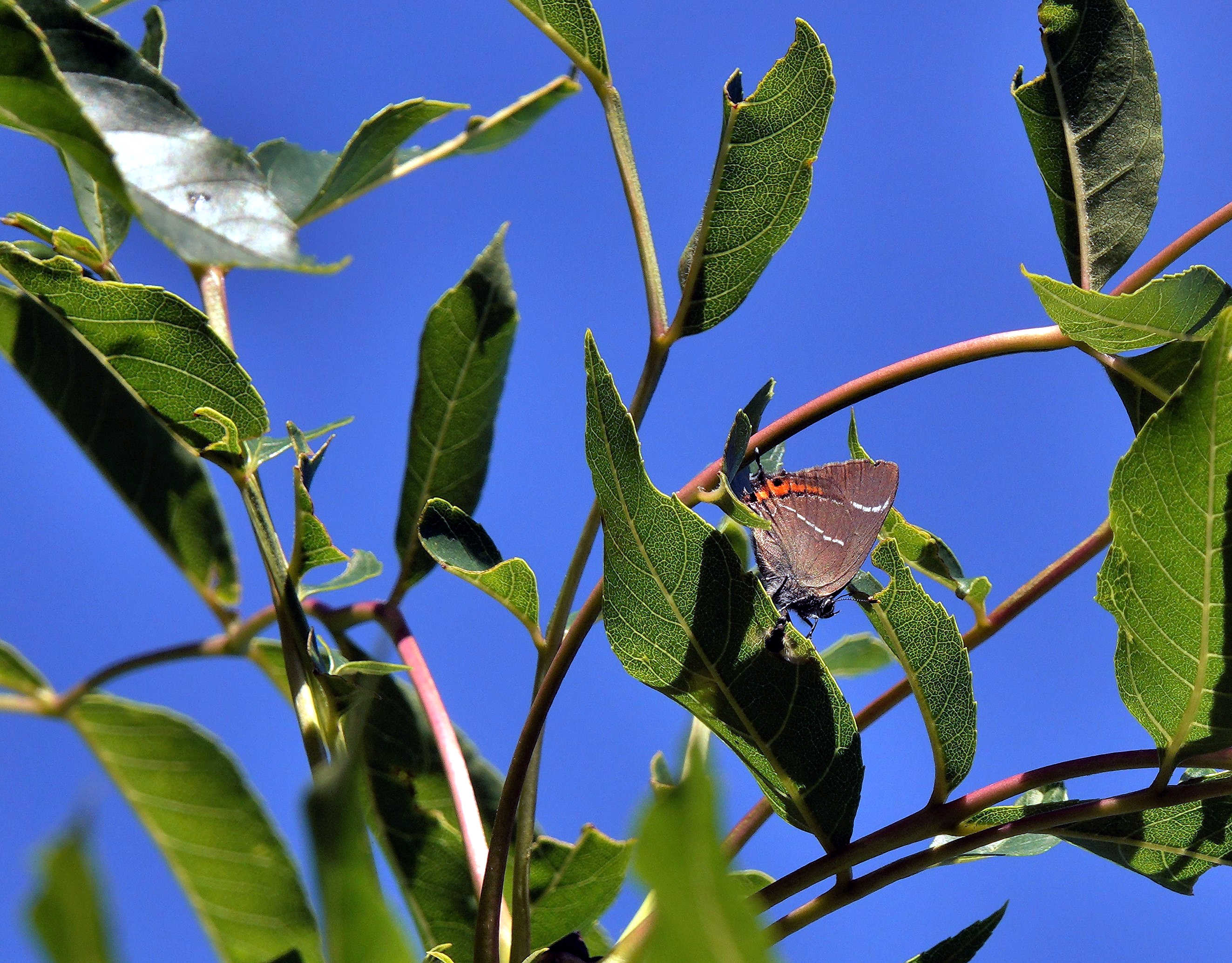 Like the Purple, the White-letter Hairstreak is an arboreal species spending much of its time at the top of elm and other trees. Ash trees in particular are well liked with them having a good helping of aphid homey dew for them to feed from.
Like the Purple, the White-letter Hairstreak is an arboreal species spending much of its time at the top of elm and other trees. Ash trees in particular are well liked with them having a good helping of aphid homey dew for them to feed from.
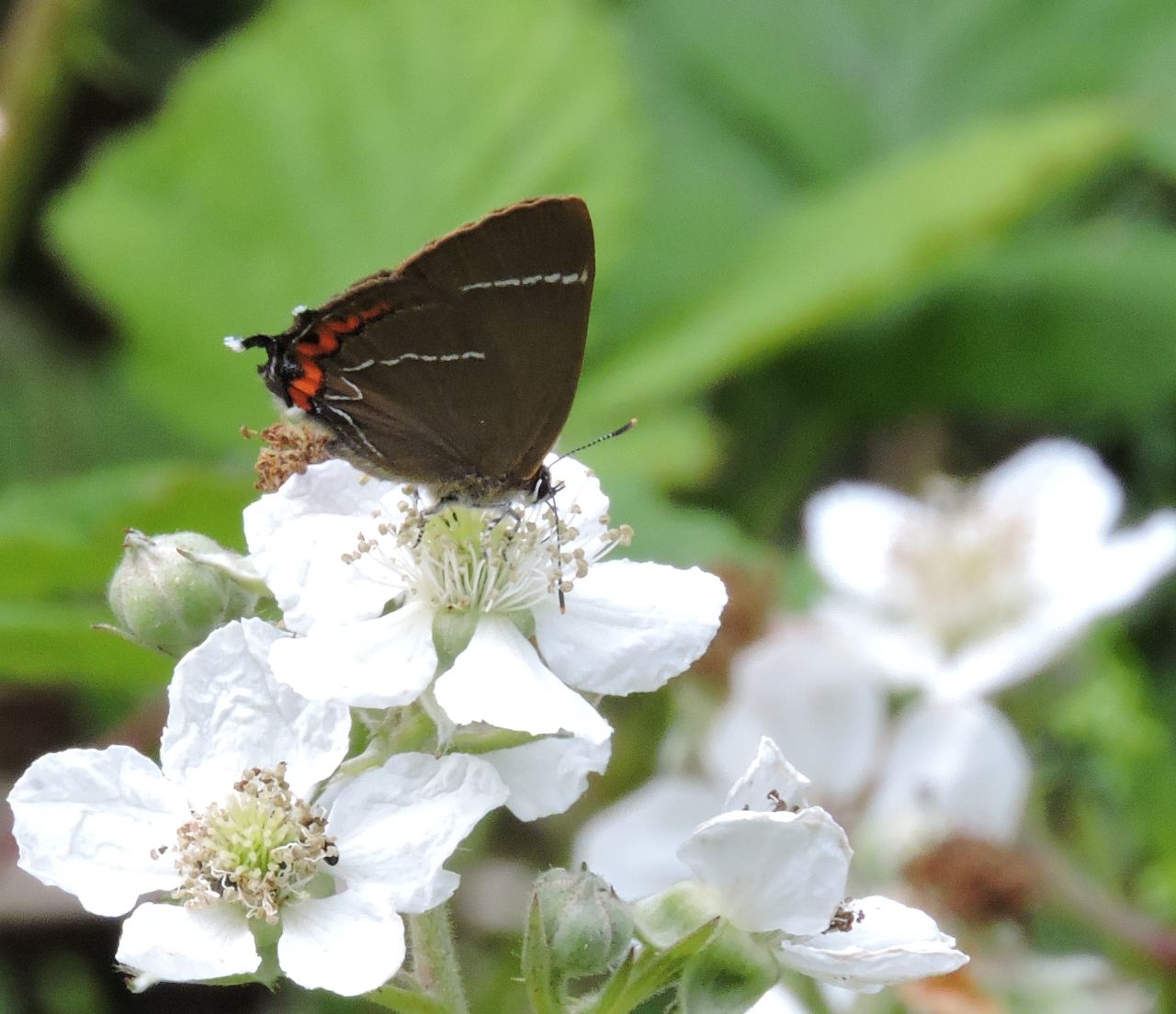 However, unlike the Purple, the White-letter does sometimes come down to take nectar from flowers, especially hemp agrimony, marjoram, and bramble, seen here. Also unlike the Purple, they never open their wings when settled - the white W mark is where they get their name from.
However, unlike the Purple, the White-letter does sometimes come down to take nectar from flowers, especially hemp agrimony, marjoram, and bramble, seen here. Also unlike the Purple, they never open their wings when settled - the white W mark is where they get their name from.
LARVAL FOODPLANT: Elms
FAVOURED NECTAR PLANTS: like the other arboreal Hairstreaks, their main diet is honey dew and sap from trees, but they will visit flowers, especially hemp agrimony, marjoram, and bramble.
WHEN SEEN: mid June to early August.
SPECIAL REQUIREMENTS: tall, mature elms that flower, and ash trees.
Small Copper (Lycaena phlaeas)
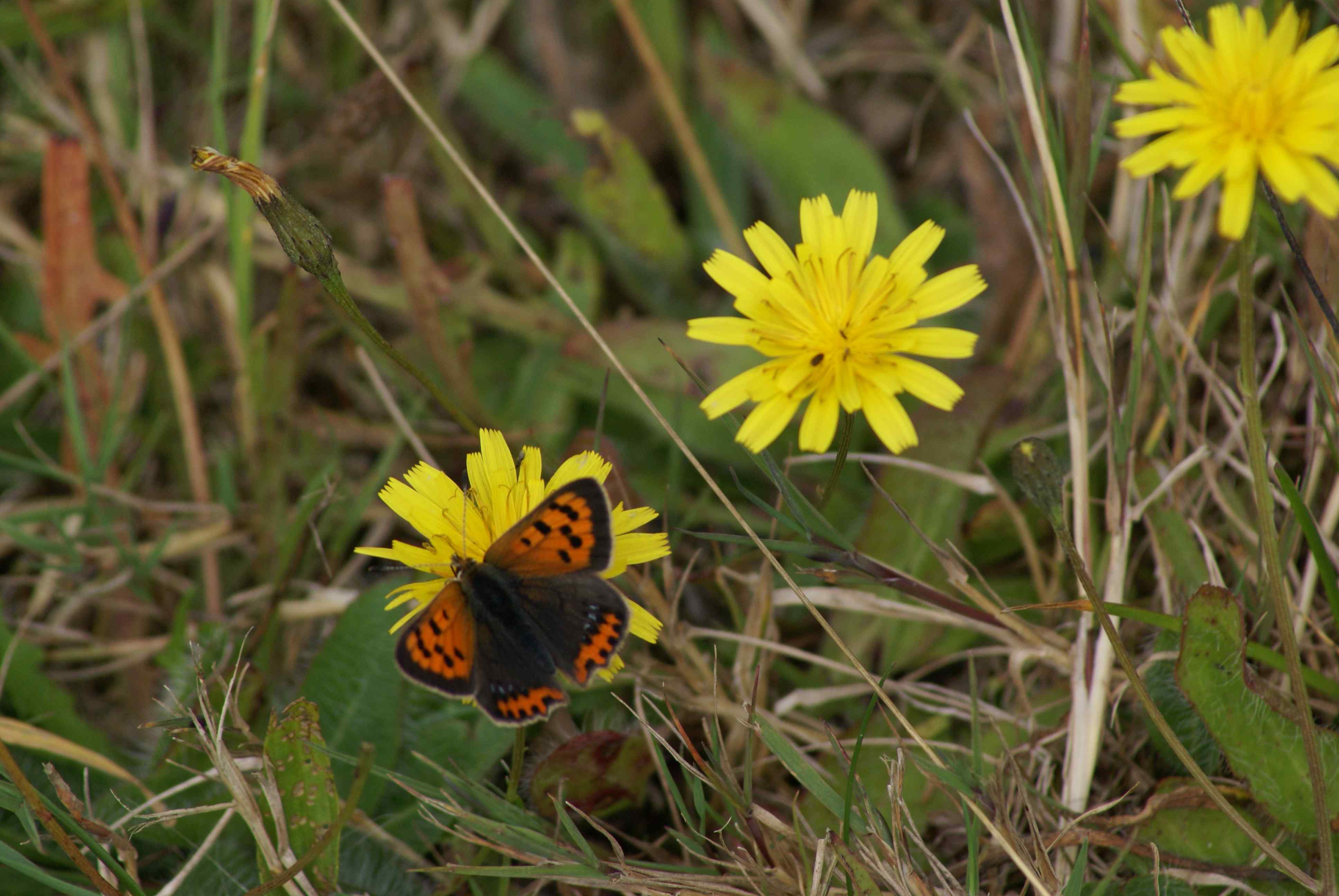 Small Copper
Small Copper
This gem of a little butterfly is sometimes made all the prettier by the addition of these rows of blue spots on the hind wings, as seen in the above photo. This common aberration is known as caeruleopunctata.
CURRENT STATUS: breeds with us but rather patchy. A target species for protection being as it is now nationally threatened.
LARVAL FOODPLANT: sorrels, and also dock seedlings.
FAVOURED NECTAR PLANTS: marjoram; hemp agrimony; tansy; fleabane; devil's-bit scabious; mint; Michaelmas daisy; ice plant; verbena bonariensis; buddleia - including globosa.
WHEN SEEN: May - June, July - September, September - October in two or three broods.
SPECIALIST REQUIREMENTS: currently the main concern is keeping a healthy abundance of common and sheep's sorrel going - we don't really want to have to rely on docks!
Common Blue (Polyommatus icarus)
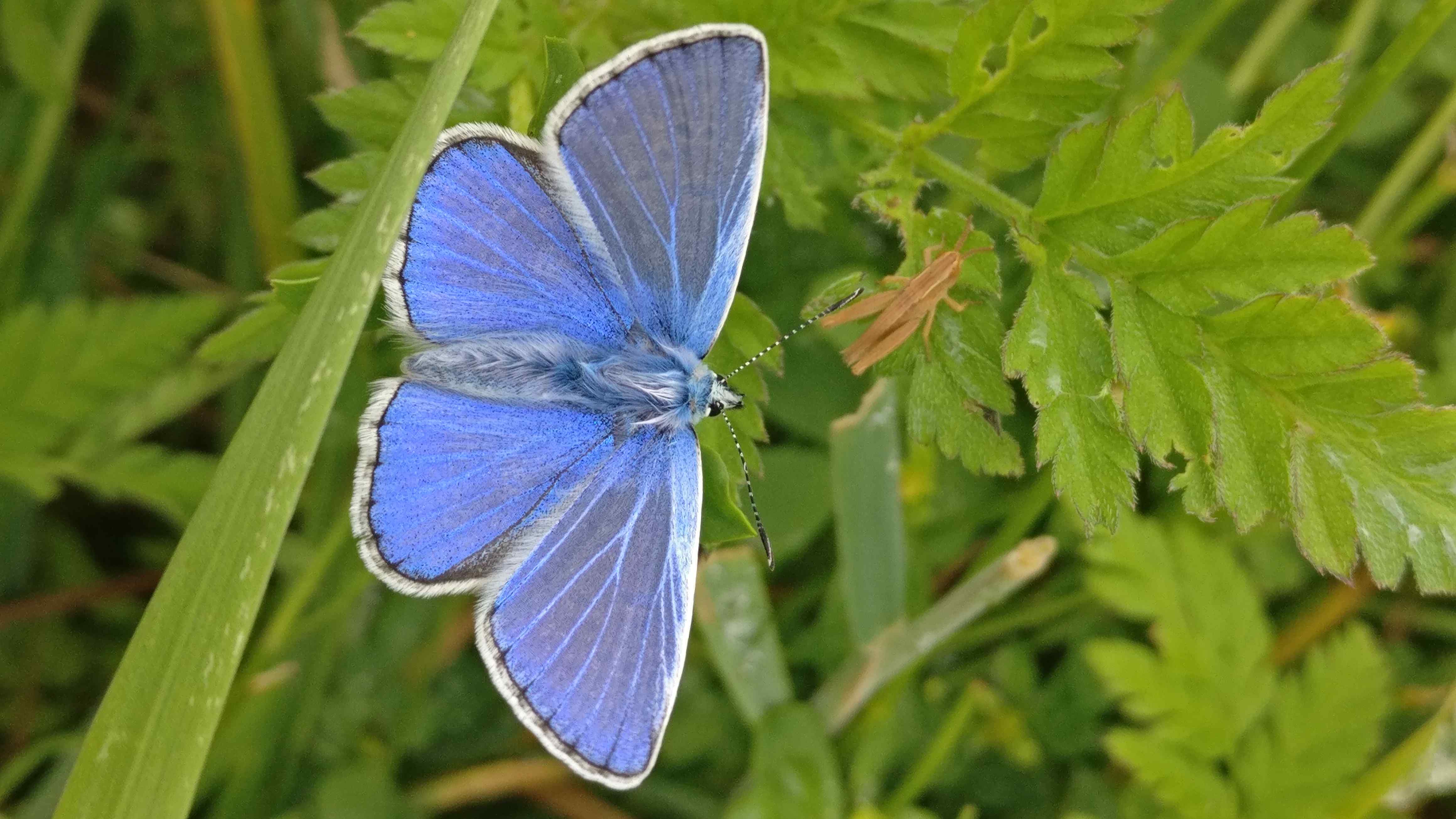 Male Common Blue
Male Common Blue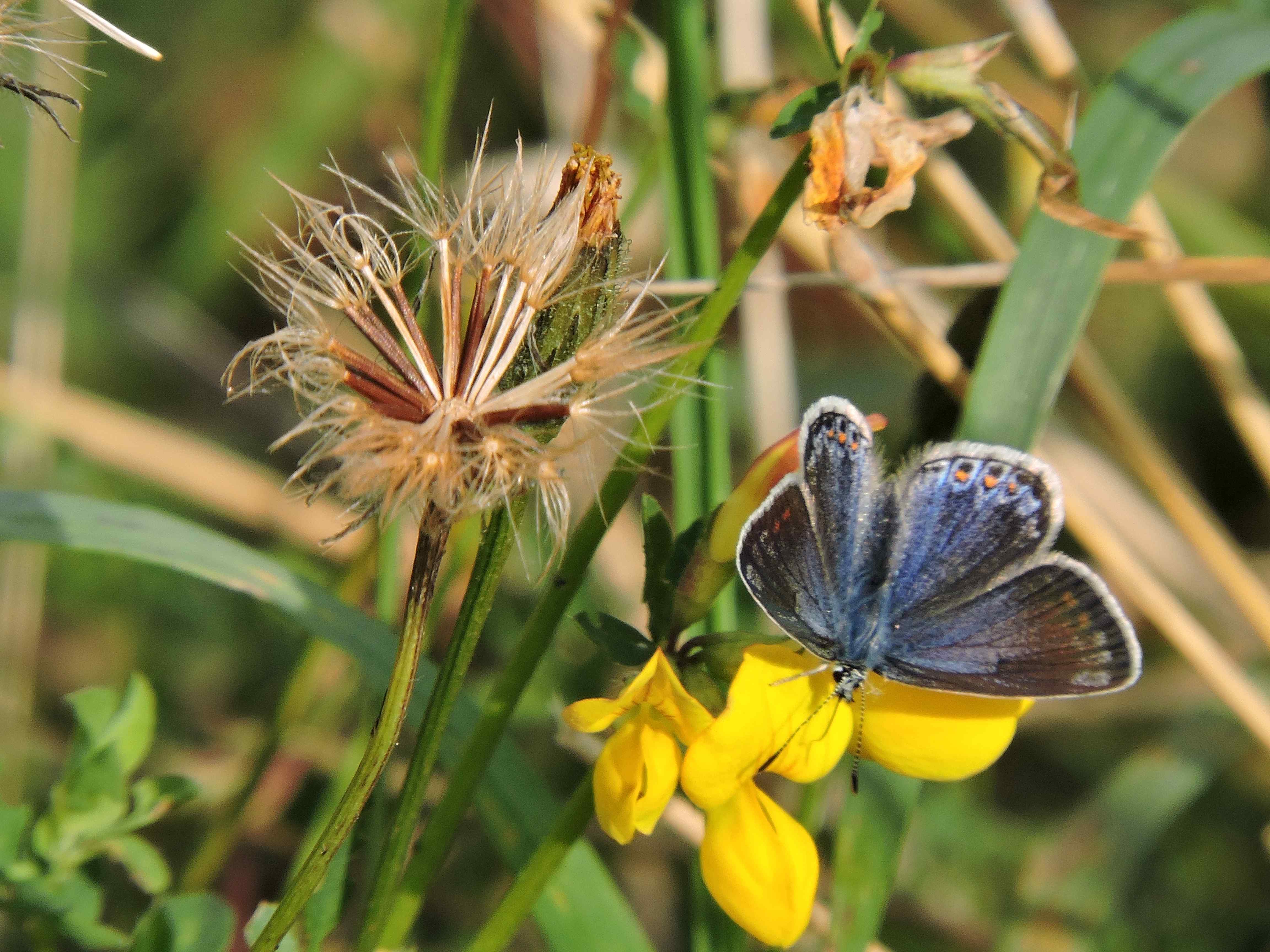 Female Common Blue
Female Common Blue
The sexes of the Common Blue are totally distinct to look at - only the male is all-over blue, the female appearing to be a totally different species and very variable with the amount of blue on the wings. Despite its name, it is not really a common butterfly - just the most common of the Blues and can be found in hundreds in healthy colonies, although they remain highly localised. Our small meadow gave a count of eighty seven one day in 2018.
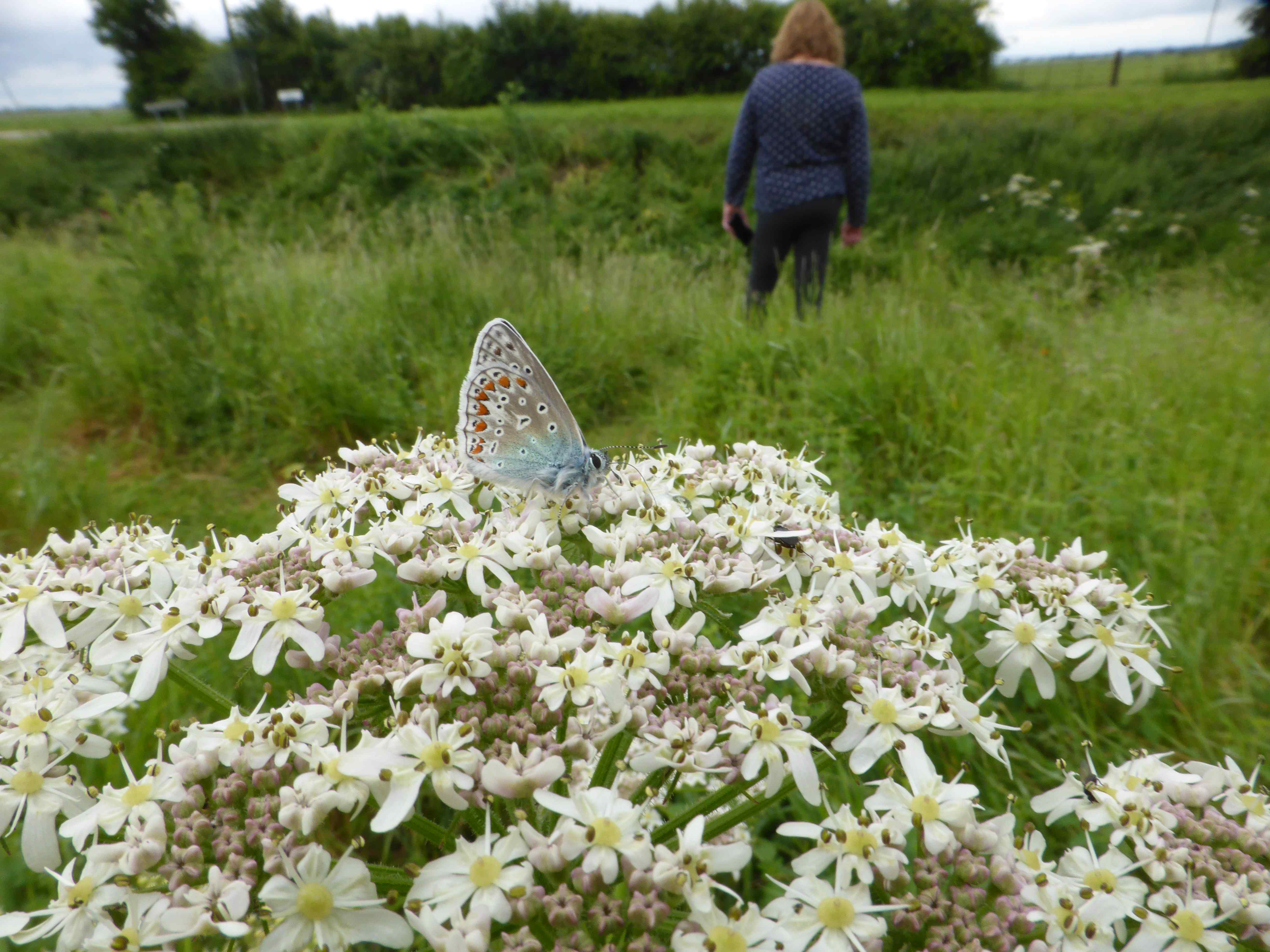 The underside markings are very ornate, and it is hard to imagine that when resting head down on grass or seed heads in dull weather and at night, theses butterflies become effectively camouflaged - but they do: from a distance the bobbing shapes appear to be grass heads.
The underside markings are very ornate, and it is hard to imagine that when resting head down on grass or seed heads in dull weather and at night, theses butterflies become effectively camouflaged - but they do: from a distance the bobbing shapes appear to be grass heads.
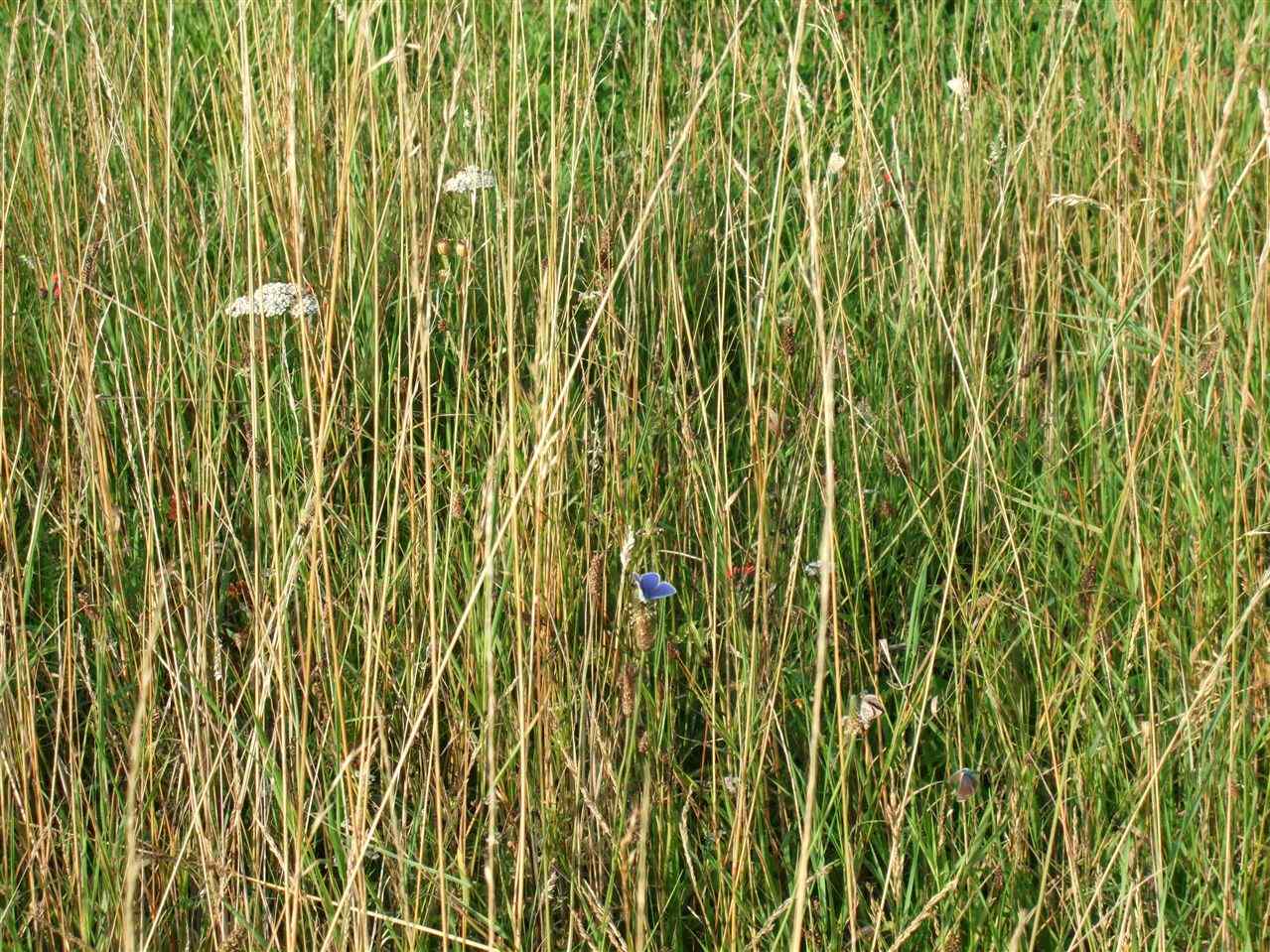 Blues roosting
Blues roosting
CURRENT STATUS: over the years has established a healthy colony, especially on the meadow.
LARVAL FOODPLANTS: bird's-foot trefoil, black medick, clover.
FAVOURED NECTAR PLANTS: bird's-foot trefoil; marjoram; clover; devil's-bit scabious; tansy.
WHEN SEEN: late May - July; August and September.
SPECIALIST REQUIREMENTS: ensuring the foodplant does not become overgrown by more competitive plants, and that it is widespread and abundant throughout the site, especially the more open, low growing grassy areas which suit the butterfly best.
Brown Argus (Aricia agestis)
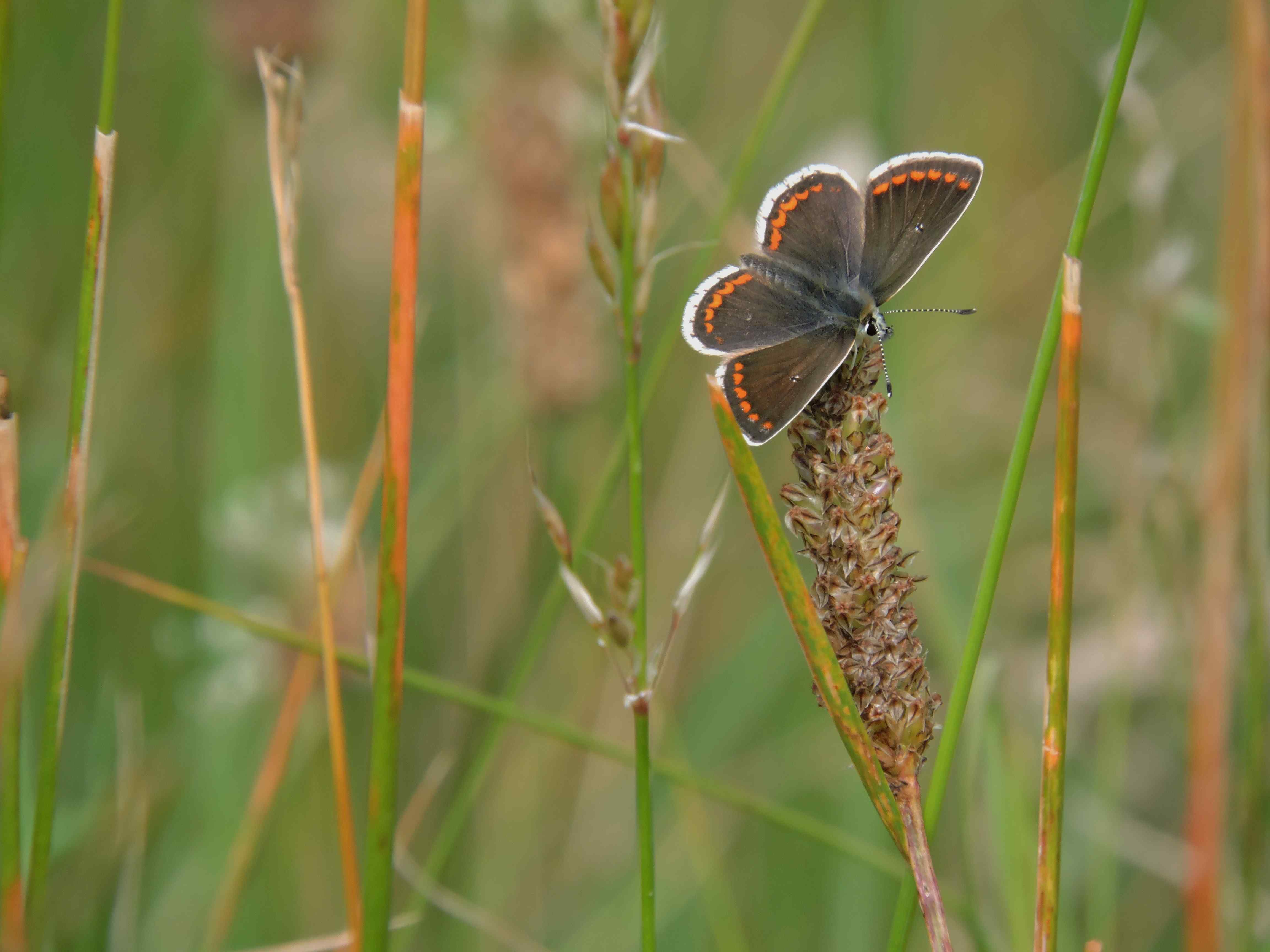 Brown Argus
Brown Argus
Our flagship species, originating from a one-off surprise sighting in September 2003, when what I had thought was a female Common Blue was observed in the meadow area, chasing Common Blues and Small Coppers. Females don't chase, so this was definitely a male Brown Argus! From then on, it gradually became more and more established over the years. There are no known major colonies in the area - so it only goes to show - a wandering female earlier in the season must have laid eggs nearby and this was the result.
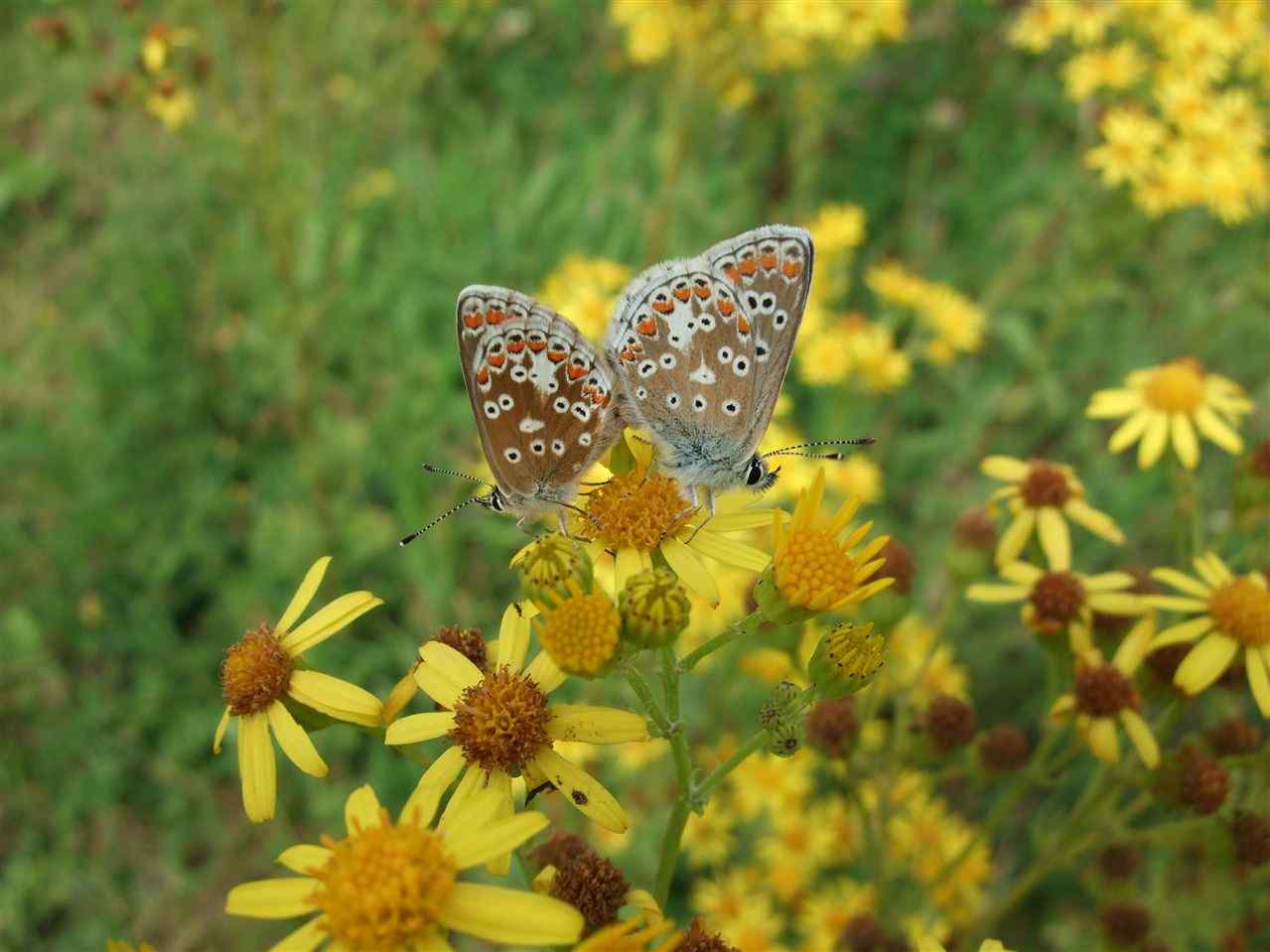 Brown Argus mating. The figure of eight rings on the hindwings are the best way to tell them apart from the female Common Blue, which do not have the figure of eight.
Brown Argus mating. The figure of eight rings on the hindwings are the best way to tell them apart from the female Common Blue, which do not have the figure of eight.
CURRENT STATUS: established resident building up numbers nicely. In the summer of 2018 our meadow resulted in the highest Lincolnshire daily count of fifty-eight that year.
LARVAL FOODPLANT: dove's-foot cranesbill and possibly bird's-foot trefoil.
FAVOURED NECTAR PLANTS: marjoram; bird’s-foot trefoil.
WHEN SEEN: June; late July and August.
SPECIALIST REQUIREMENTS: open meadow type habitat and ample woodland glades with an abundance of its foodplants.
Holly Blue (Celastrina argiolus)
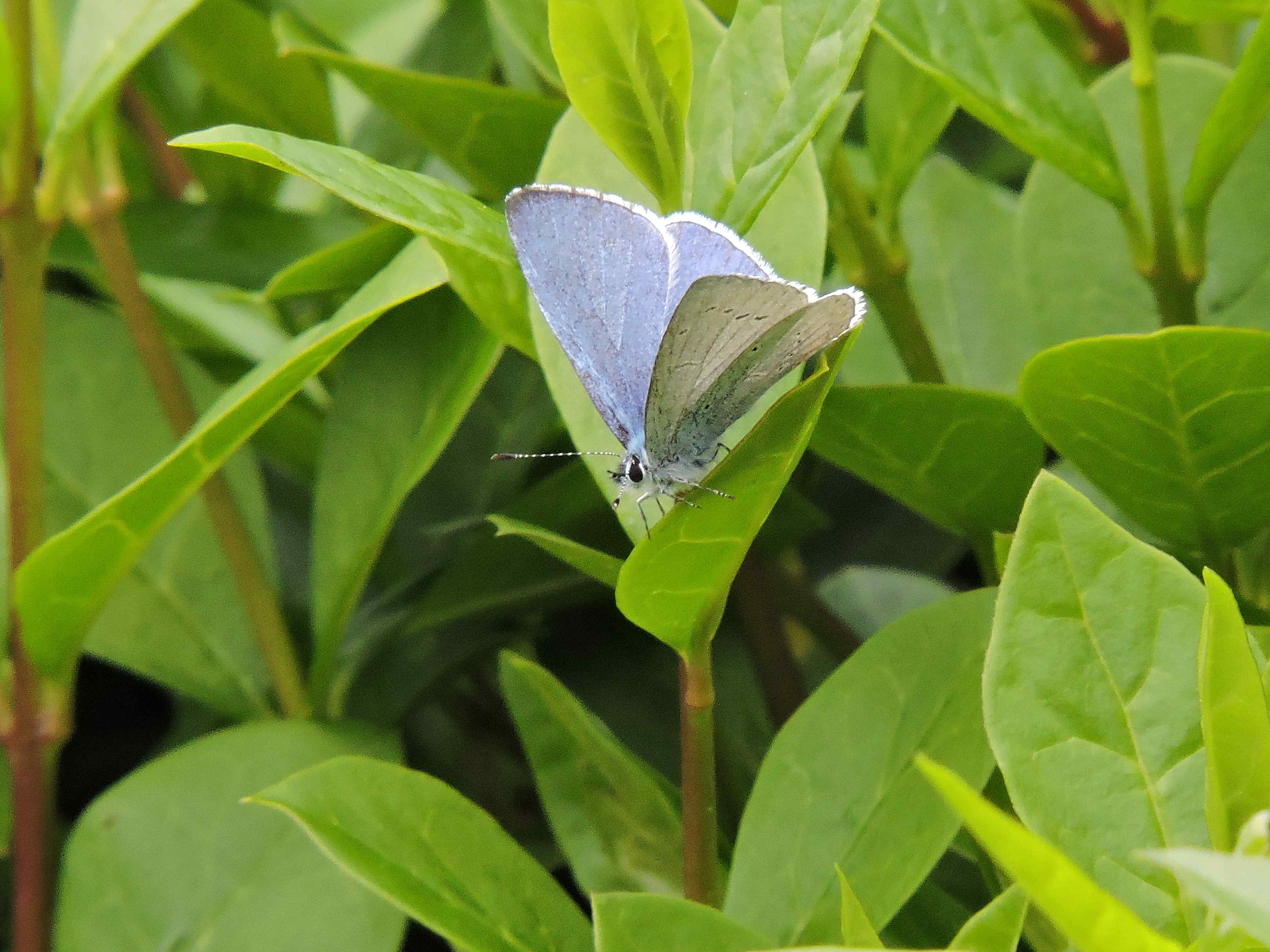 Male Holly Blue
Male Holly Blue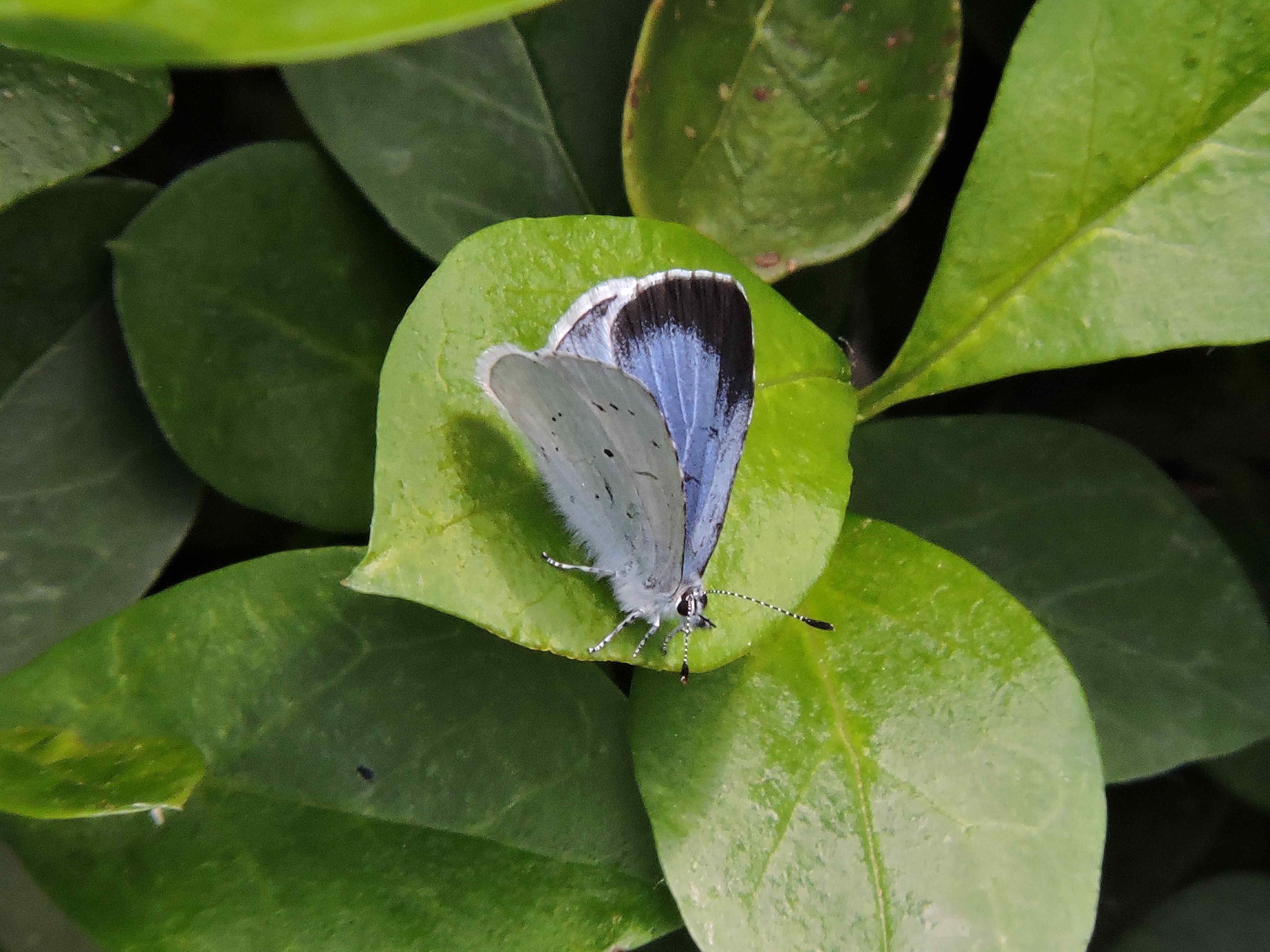 Female Holly Blue
Female Holly Blue
The female has the distinctive black border to the wings (discernible even in flight), which is lacking in the male who appears similar to the male Common Blue apart from being more of a sky blue shade. The underside lacks the typical Blue family mosaic, being a silvery grey with just a scattering of black dots.
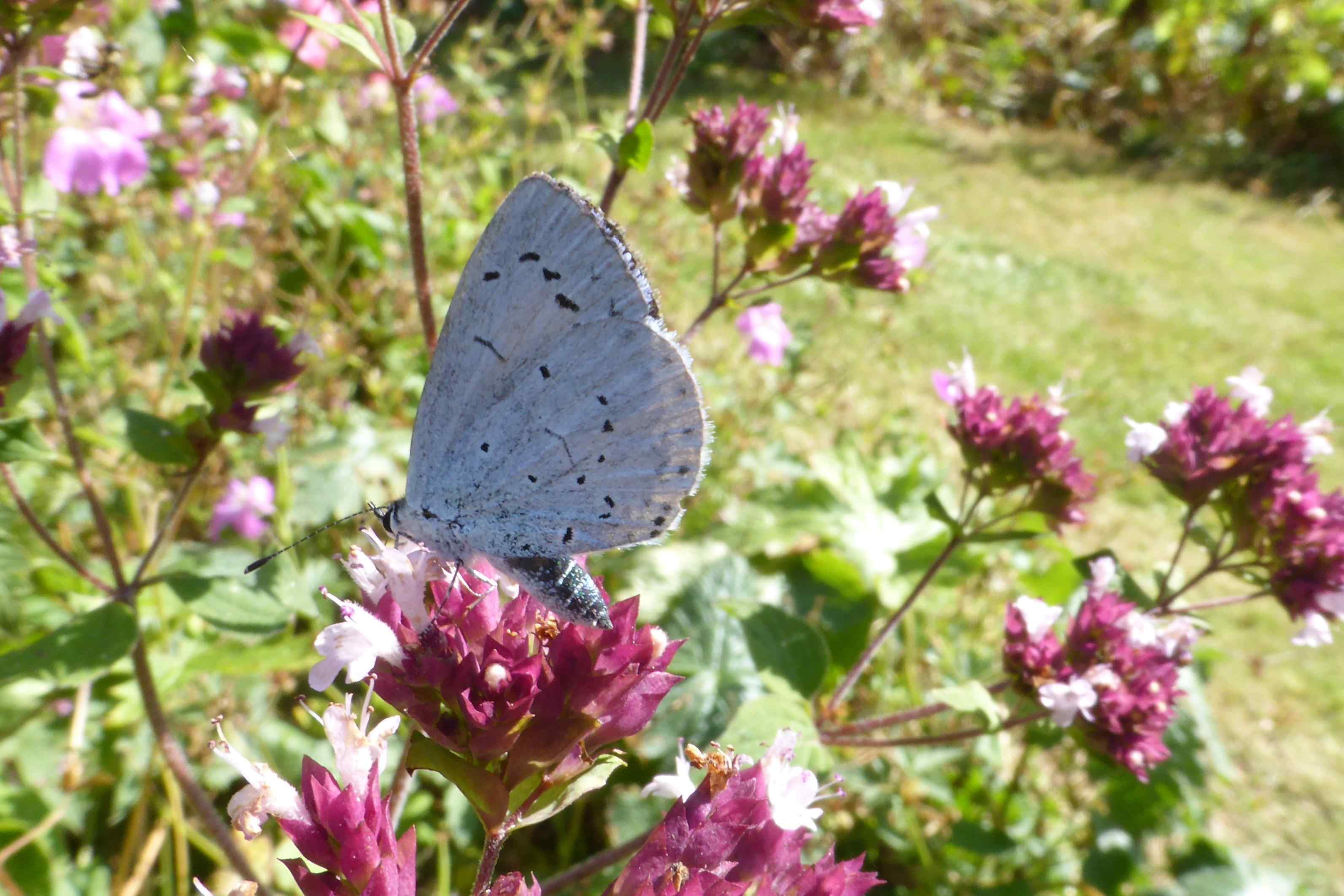 Holly Blue underside
Holly Blue underside
This Blue behaves more like a Hairstreak in as much that it favours trees and shrubs to open countryside. It is generally found around holly trees and bushes but not exclusively. It wanders more than other Blues, and although really a woodland butterfly, it favours any habitat where trees and hedgerows flourish.
CURRENT STATUS: very up and down (typical of this species). Common some years, totally absent in others.
LARVAL FOODPLANTS: in our Derbyshire garden the caterpillars fed from the developing berries of various shrubs: holly, ivy, snowberry, and possibly bramble and hawthorn. Here, they mainly use neighbouring mature holly trees plus dogwood and alder buckthorn in our garden.
FAVOURED NECTAR PLANTS: bramble; hemp agrimony; forget-me-not; marjoram; buddleia.
WHEN SEEN: April - June; July and August.
SPECIALIST REQUIREMENTS: difficult due to its national population peaks and troughs, but at least we can offer this species a suitable habitat now that the woodland areas are rapidly developing.